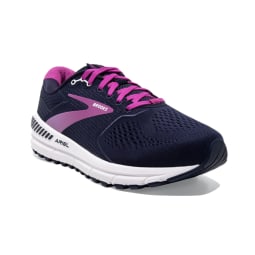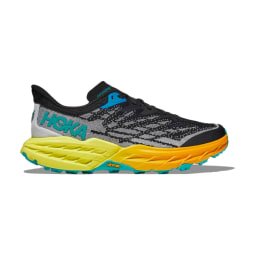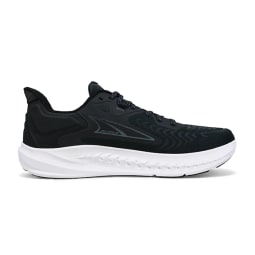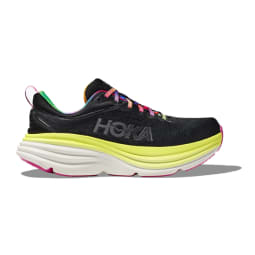The Best Running Shoes For Beginners, According To Podiatrist's Recommendations & Guidelines

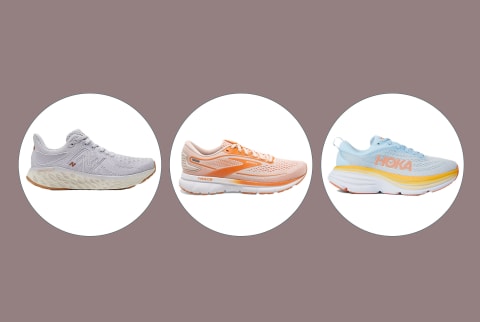
- Best for wide feet: Altra Torin 7
- Best for trail running: Hoka Speedgoat 5
- Best for flat feet: Brooks Ariel '20
- Best for high arches: Brooks Adrenaline GTS 22
- Best for older runners: New Balance Fresh Foam X 1080v12
- Best for women: Brooks Trace 2
- Best for podiatrist recommended: PUMA Deviate Nitro 2
- Best long distance: ASICS Gel Nimbus
- Best for treadmill running: Hoka Clifton 9
Whether you're considering joining a local run club or seeking a solo activity, hitting the pavement (or treadmill!) comes with a slew of healthy perks. Running is a great way to reduce stress, support a positive mood, improve cardiovascular health, and promote longevity1—and when you run outdoors, you get the added bonus of soaking up vitamin D, which is proven to boost immunity2. The best running shoes for beginners will help you reap these benefits with far less risk of injury.
Before you hit the ground, well, running, let's hear what podiatrists have to say. Below, find out which running shoes are best for beginners with flat feet, wide feet, high arches, and more. Plus, how to get started with running.
What to look for in running shoes for beginners
The earlier it is in your running journey, the more important it is to make sure your feet are protected from impact and comfortable. Robert Kornfeld, DPM, says the single most important thing to consider when taking up running is the stress and increased impact you'll be putting on the muscles of your feet and legs.
"In the beginning, running shoes should be chosen for good cushioning as well as support," Kornfeld explains. "Once you become a seasoned runner, you can consider shoes that are more lightweight, well cushioned, and somewhat less supportive, if you are running longer distances."
Board-certified podiatrist Anne Sharkey, DPM, based in Austin, Texas, adds, "Choosing the right model of running shoe based on your foot type is most important. I see [my patients'] foot pain improve as they are fitted with running shoes appropriate for their foot type."
How should running shoes fit?
Podiatrists say running shoes for beginners (and in general) should provide a secure, snug fit—but you'll want to make sure there's enough room in the toe box to accommodate natural foot swelling during long runs.
Kornfeld explains, "Running shoes need to fit true to size. They shouldn't be too long that the foot pistons inside the shoe, causing toe/toenail injury and they shouldn't be so snug that they cause chafing and blistering and crowding in the toe box."
Our experts recommend always trying on running shoes at the end of the day, when there is a small, natural swelling or increase in fluid buildup in the foot. This will help size you more accurately.
Sharkey recommends a three-step process to determine whether a shoe fits properly:
- Trace your foot with a pencil on a piece of paper.
- Set any running shoe you are considering wearing on top of the paper.
- Your foot should fit within the outline of the shoe. If you foot overlaps the shoe, this shoe is not a good shoe for your foot shape.
How much do beginner running shoes cost?
As with any purchase, budget is an important factor to consider. Hillary Brenner, podiatrist with practices in New York and New Jersey, says how much you should spend depends on the individual's fitness level and how long they have been working out.
An average running shoe for beginners costs around $160, though you can often find good sales on popular shoe brands.
While it might cost more to buy podiatrist-recommended shoes, it can save you in the long run (pun intended) from injuries. It will also make your runs more comfortable and enjoyable.
"My strong recommendation is to see a podiatrist who includes sports medicine in the practice. Learning about your foot type and the shoe requirements will prevent a lot of mistakes and injuries," Kornfeld agrees.
How to choose running shoes for beginners
Beyond picking the right shoes for your gender and personal weight, Brenner advises knowing what type of foot you have (i.e. neutral, flat, high arches, wide). While visiting a podiatrist is best, Brenner says you can also head to your local specialty running shoe store to have an expert help determine important factors such as the stability of your foot and your foot strike.
Kornfeld adds, "Choosing a running shoe for beginners depends on whether you will be running on road, trails, treadmills as well as the distance you are planning on running."
We've included the best running shoes for beginners for wide feet and high arches below—but you can continue to learn more about wide feet and high arches in our other roundups.
How running impacts our health and longevity
It's no secret that running offers remarkable advantages for our physical well-being, mental state, and longevity. In fact, we wrote a whole article with 13 studies that show that running is definitely good for you. It's clear that running can help fend of depression and Alzheimer's disease, but an astounding amount of research also shows that running can slow aging.
A study from the Stanford University School of Medicine discovered that older runners had fewer disabilities, a longer life span, and were half as likely to die an early death3 when compared to aging non-runners. They also found that running slowed cardiovascular deaths and was associated with fewer deaths from neurological disease, infections, and even cancer.
According to Brenner, engaging in long-distance running contributes significantly to improved circulation, which, in turn, serves as a preventive measure against chronic conditions like diabetes and heart disease. Additionally, it bolsters bone health and fosters a more positive mood. This particular research study1 has indicated that regular running can extend one's life by around three years.
Equipping yourself with the appropriate long-distance running shoes can have many important benefits, including better posture, reduced impact on your joints, and a decreased risk of injury. All of these factors collectively contribute to your ability to sustain a long-term running routine, thereby enhancing your overall longevity.
How to get started with running
Ready to hit the pavement? You're in luck!
We have a complete guide to running for beginners, where you can learn from running coaches about breathing form (yes, it's a thing!), what to eat before a run, and how to avoid common injuries. You'll also find a running training plan for beginners curated by Danny Mackey, head coach of Brooks Beasts pro running team.
Form, nutrition, and injury-prevention aside, a huge part of getting started with running is motivation. Our marathon-running commerce editor, Carleigh Ferrante, says crossing the finish line takes as much mental training as it does physical.
Some of Ferrante's favorite ways to stay motivated are running with friends (or joining a local running group), signing up for a race (it's always helpful to have a goal you're working toward!), investing in the best running gear, and curating the perfect running playlist.
It also helps to learn more about the mental benefits of running—and, of course, finding the best running shoes for beginners is motivation in itself.
Our picks of the best running shoes for beginners of 2023:
Best for women: Brooks Trace 2

Pros:
- Durable heel
- Ideal for road runs
- Budget friendly
Cons:
- Tight fit around the toes
Materials:
Recycled materialsSizes available:
7-15Half sizes availableColorways:
15Drop:
12 mmWeight:
8.6 oz.Return policy:
Free 90 day returnsThe podiatrists we spoke with love Brooks as a brand, though only certain models from Brooks meet APMA standards and their specific recommendations. If you're just starting out in your running journey, the Brooks Trace 2 is a nicely cushioned shoe.
In fact, its dynamic cushioning technology adapts to your individual running speed and stride. This running shoe for beginners has breathable materials that provide a snug fit while still maintaining airflow and breathability.
We’ve also called it out as the best beginner running shoe in our roundup of the best running shoes for women and the best cushioned running shoes.
Best for older runners: New Balance Fresh Foam X 1080v12
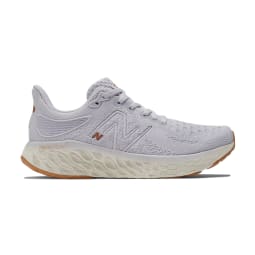
Pros:
- Standard and wide widths
- Neutral colors for versatile wear
Cons:
- Soles wear quickly
Materials:
Bio-based and/or recycled materialsSizes available:
5-13Half sizes availableColorways:
3Weight:
8.2 oz.Return policy:
Returns accepted within 45 daysOn Kornfeld’s and Brenner’s list of recommended running shoes for beginners, New Balance’s 1080v12 boasts the brand's most luxurious Fresh Foam cushioning to date.
Kornfeld says, “This is a running shoe for beginners with great cushioning and is built for stability. It has also been cited for its very comfortable fit.” It’s perfect for runners of all ages and skill levels.
The broader midsole delivers enhanced flexibility precisely where the shoe narrows, offering an improved running experience. Furthermore, the shoe's upper ensures breathability, and it maintains an overall lightweight feel.
These shoes come with a removable insole, allowing you to easily insert custom orthotics if required. What's more, the midsole foam incorporates approximately 3% bio-based materials, making it a sustainable choice for eco-conscious runners.
Advertisement
Pros:
- Great for distance runners
- Lightweight
- Supportive
Cons:
- Not great for wide feet
Materials:
Recycled materialsEngineered meshBio-based cellulose nanofiberSizes available:
5-13Half sizes availableColorways:
18Drop:
13 mmWeight:
8.7 oz.Return policy:
30 daysWe’ve shouted out these ASICS running shoes for their exceptional cushioning, comfort, and support. The brand's gel technology is expertly engineered to minimize impact, rendering these shoes an ideal choice for new runners whose muscles aren’t quite used to the impact of running on their muscles and joints.
Our commerce editor previously said the Nimbus Gel 25 is the only shoe she trusts for her long runs. She attests that they offer a gentler landing compared to other models she has evaluated, all without imposing a burdensome weight on your feet.
Featuring a breathable mesh upper and a resilient outsole, these shoes are crafted to endure various weather conditions seamlessly. Moreover, there's an added eco-conscious advantage: At least 30% of the shoe's upper is constructed from recycled materials.
Best for podiatrist recommended: PUMA Deviate Nitro 2
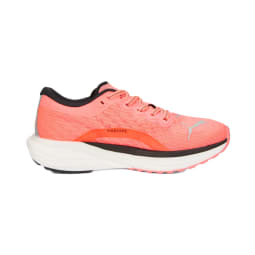
Pros:
- Breathable mesh upper
- TPU heel spoiler
- Lightweight feel with great cushioning
Cons:
- Limited wide sizes available
Materials:
Deviate NITRO™️ 2NITRO™️ Elite foamSizes available:
5-12Colorways:
8Drop:
6 mmWeight:
9.1 oz.Return policy:
30 daysProudly bearing the APMA Seal of Acceptance and the thumbs up from the podiatrists we spoke with, the Puma Deviate Nitro is a great choice for new runners. Kornfeld says, “It has a cushioned forefoot and predictable fit” and new runners can definitely benefit from this level of security.
Notably, this shoe surpasses its acclaimed predecessor, the Deviate NITRO™️, in terms of responsiveness in cushioning. The most recent iteration boasts a complete layer of premium NITRO™️ Elite foam across the midsole, providing unparalleled cushioning and optimizing propulsion.
Advertisement
Pros:
- Spacious yet secure
- Wide & extra wide sizes available
- GuideRails technology adds extra support
Cons:
- Only offered in four colors
Sizes available:
6-13Colorways:
5Drop:
12 mmWeight:
10.7 oz.Return policy:
90 daysGetting into running can be particularly difficult for people with flat feet. Running can make you susceptible to other foot issues such as bunions, back pain, and even tendon damage.
This shoe offers the right amount of cushion, flexibility, support and a wide toe box to benefit flat footed runners. It's crafted from an engineered mesh upper and featuring the patented BioMoGo DNA midsole, offering a comfortable-yet-secure fit.
This shoe boasts a supportive design and comfortable cushioning. Plus, the GuideRails help maintain proper foot alignment. Notably, this technology also contributes to enhanced knee and hip support, offering a double benefit.
Best for high arches: Brooks Adrenaline GTS 22

Pros:
- Orthotic-friendly
- APMA seal of acceptance
- Affordable price point
Cons:
- Shorter laces
- Mixed reviews about durability
Materials:
Recycled materialsSizes available:
5-13Colorways:
28Drop:
12 mmWeight:
10.2 oz.Return policy:
90 daysThe podiatrists we spoke with tout Brooks’ Adrenaline GTS 22 particularly for its enhanced stability. This model has specifically earned the APMA Seal of Acceptance, meaning podiatrists agree it is beneficial for foot health.
Plus, it earned the spot as the best running shoe for stability and high arches in our previous roundup. It proves to be an excellent selection for runners across all proficiency levels, including individuals experiencing knee discomfort, thanks to its patented GuideRails technology that ensures proper foot alignment.
We’re also big fans of the brand’s commitment to sustainability. This shoe incorporates recycled materials, including repurposed plastic water bottles, aligning with the company's ambitious goal to attain net-zero carbon emissions by 2040.
Advertisement
Pros:
- Less weight, more traction
- Ideal for trail runs, golfing, and more
- APMA approved
Cons:
- Less cushioning than the Speedgoat 4
Materials:
Vegan recycled materialsRubber soleEVA foam midsoleSizes available:
5-12Half sizes availableColorways:
17Drop:
4 mmWeight:
8.5 oz.Return policy:
30 daysEvery podiatrist we've consulted gives high praise to Hoka. Defined as orthopedic running shoes on their website, their shoes bear the APMA certification. Podiatrist Dr. Anne Sharkey says that thanks to Hoka’s maximalist design, characterized by a high heel stack and EVA foam composition, their shoes excel in shock absorption. The Speed Goat adds a layer of grippiness and traction which makes it great for trail running, which is why we called it out in our roundup of the best running shoes for women.
When comparing the Speed Goat 4 and 5, the primary distinction lies in their weight and traction. The Speed Goat 5 trumps its predecessor by being half an ounce lighter while providing superior traction on the trails.
Pros:
- Regular and wide available
- APMA certified
- Podiatrist recommended
Cons:
- Zero drop not for everyone
Materials:
Engineered meshFootPod™ outsoleSizes available:
7-15Half sizes availableColorways:
5Drop:
0 mmWeight:
9.8 oz.Return policy:
30 daysAltra is a top recommendation from Dr. Brenner for a wide, maximalist, cushioned shoe that comes available in a variety of widths for men and women. We also love that the Torin 7 even earned the APMA Seal of Acceptance, as we mention in our roundup of the best cushioned running shoes.
What sets this running shoe apart is its consideration of anatomical differences in people's feet, evident through its Footshape™ design. Then, the incorporation of an additional two millimeters of the plush and airy Altra EGO™ MAX foam into the midsole enhances the shoe's responsiveness and cushioning.
The Altra Torin 7 features a redesigned tongue that offers an even more luxurious feel, and a contoured heel collar ensures a snug and comfortable fit. Then, an extra two millimeters of high-quality, lightweight foam, elevates the midsole's capacity for rebound.
Advertisement
Pros:
- Podiatrist recommended
- Excellent cushioning
- Neutral stability
Cons:
- Some say they're too bulky
Materials:
Recycled polyesterRecycled nylonRubberSizes available:
5-12Half sizes availableColorways:
17Drop:
5 mmWeight:
7.3 oz.Return policy:
30 daysHoka’s Clifton 9 is a light and plush option for new runners with flat feet because it provides the necessary stability and support. Kornfeld says, “The Hoka Clifton 9 has excellent cushioning with a neutral stability construction great for everyday running for beginners.”
The shoe’s meta rocker design ensures that each step is characterized by a buoyant and seamless feel. Plus, the generously wide toe box makes it a great choice for those with flat feet.
This is the ninth iteration of the award-winning Clifton shoe which is lighter and has more cushion than its predecessors. It also is designed with a plusher heel and breathable knit material to keep you comfortable on your runs.
How we picked:
Expert insight
Most of our picks are direct recommendations from the podiatrists we interviewed. Others were chosen by our team based on personal experience, our expert's guidelines, and additional research.
Design
We took our expert's recommendations to heart and focused on shoes that provide ample support, shock absorption, cushion, and flexibility.
Quality
Each shoe we chose is made with durable materials that will stand the test of time (and heavy mileage), so you'll get more life out of your investment.
Price
Everyone's budget is different—that's why we included a wide range of price points, with a few picks that are more budget-friendly.
FAQ:
Are Brooks good for beginner runners?
Yes, podiatrists recommend Brooks for beginner runners.
Should beginner runners wear stability shoes?
Per podiatrist Robert Kornfeld, DPM, "It is recommended until the foot and leg muscles are well conditioned and then they can switch shoe styles as needed."
How much should a beginner spend on running shoes?
"It is possible to spend anywhere between $80 and $150 for really good running shoes," says Kornfeld.
Do new running shoes hurt at first?
"If they get the correct fit it shouldn't hurt. But beginner runners usually get blisters and the shoe might feel stiff in the beginning," podiatrist Hillary Brenner, DPM, explains.
Should you size up in your running shoes?
Kornfeld says, "Yes, to take into account swelling. A half a size up should be fine. Plus make sure to go shoe shopping midway through the day. That's when the feet are true to size due to swelling."
The takeaway
The best running shoes for beginners can make all the difference for new runners in terms of comfort, support, and injury prevention. To start off on the right foot (literally), take the time to assess your individual foot needs, visit your local running store to assess your movement, and invest in a pair of running shoes that will accompany you on countless strides toward your optimal health and fitness. And, since nutrition is a key component of a healthy workout regimen, be sure to check out our comparison of two popular meal kit delivery services.

